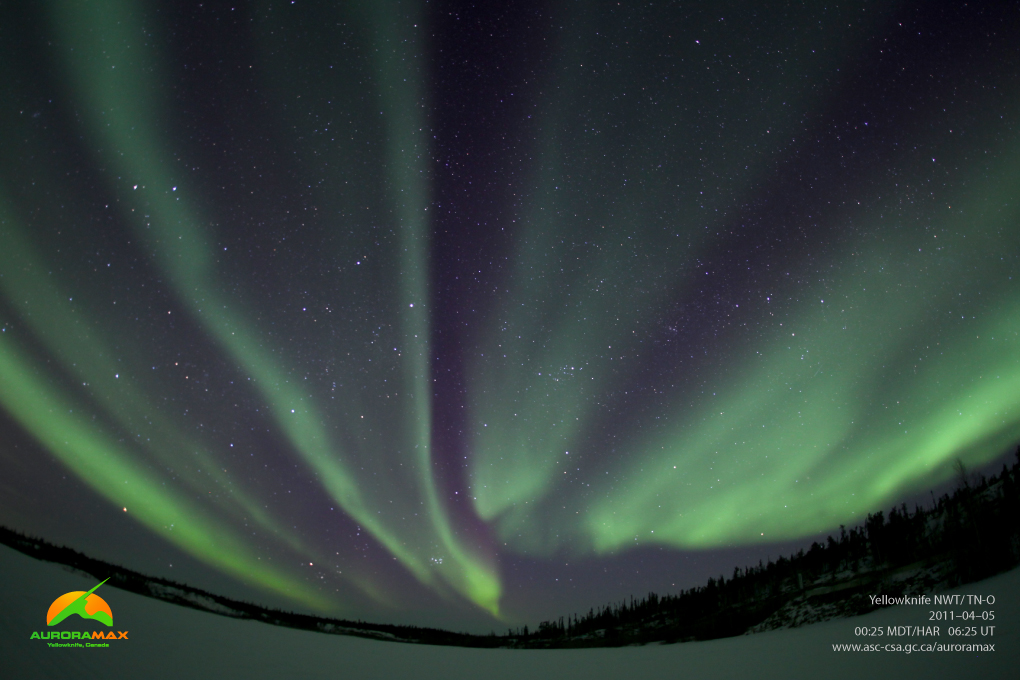Studying the aurora in Canada
The North Magnetic Pole is in the Canadian Arctic, a geographic location that gives Canadian scientists a privileged viewpoint to study the auroras.
Studying Earth's relationship with the Sun helps scientists predict periods of intense solar activity so that we can prepare for space weather.
Scientists are only beginning to understand phenomena linked to Earth's magnetic field. Research being led by Canadians is helping provide a better understanding of the magnetosphere, which protects us from the Sun's lethal radiation.
Here are some examples of current Canadian research.
ePop
Suite of scientific instruments on the CASSIOPE satellite to observe the ionosphere.
THEMIS
Twenty observatories on the ground and five small satellites carrying electric, magnetic, and particle detectors to study auroras.
Space weather over Canada
Canadian scientists design and operate instruments to improve understanding of the causes and processes of space weather.
Learn more about the history of Sun–Earth studies in Canada:
Explore further
- Date modified:
